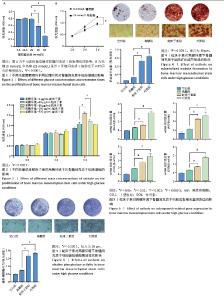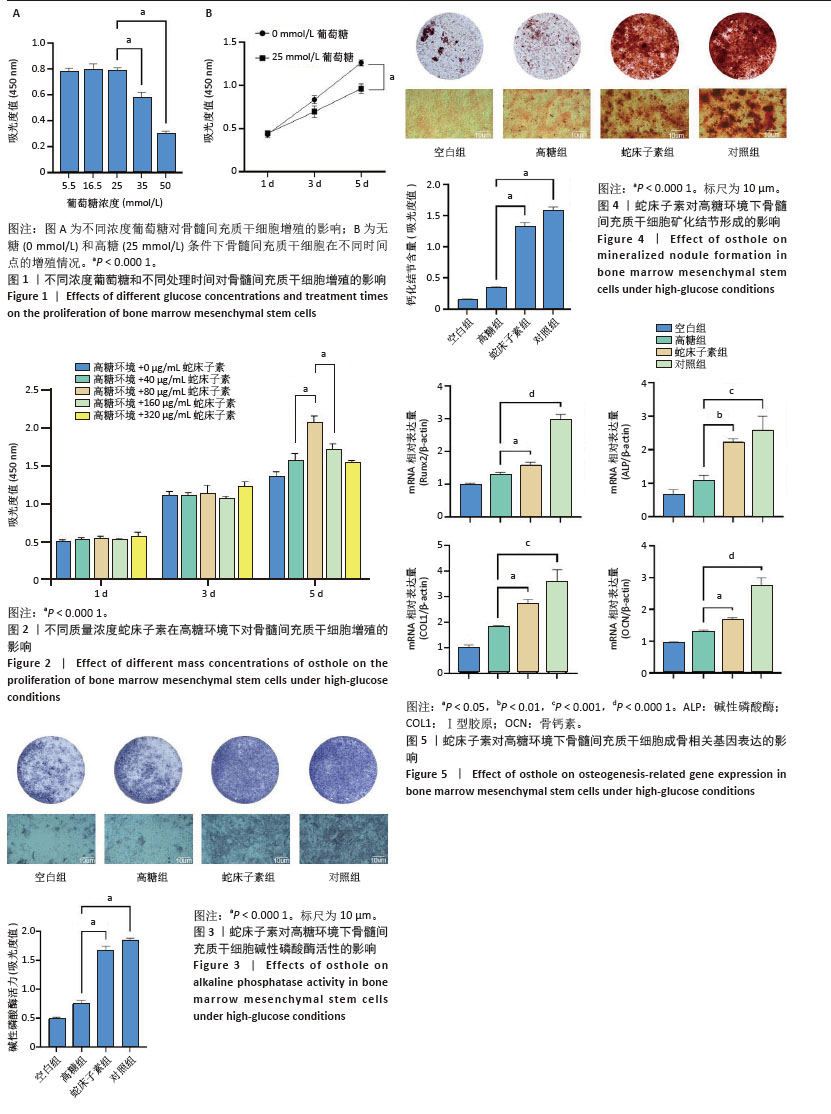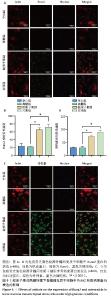[1] SCHWARTZ SS, CORKEY BE, R GAVIN J 3RD, et al. Advances and counterpoints in type 2 diabetes. What is ready for translation into real-world practice, ahead of the guidelines. BMC Med. 2024;22(1):356.
[2] ROSE KJ, PETRUT C, L’HEVEDER R, et al. IDF Europe’s position on mobile applications in diabetes. Diabetes Res Clin Pract. 2019;149:39-46.
[3] KUPAI K, KANG HL, PÓSA A,et al. Bone Loss in Diabetes Mellitus: Diaporosis. Int J Mol Sci. 2024;25(13):7269.
[4] RUAN B, DONG J, WEI F, et al. DNMT aberration-incurred GPX4 suppression prompts osteoblast ferroptosis and osteoporosis. Bone Res. 2024;12(1):68.
[5] LIU Y, NISHIURA M, FUJII M, et al. Selective Pyk2 inhibition enhances bone restoration through SCARA5-mediated bone marrow remodeling in ovariectomized mice. Cell Commun Signal. 2024;22(1):561.
[6] HURTADO Y, HERNÁNDEZ OA, DE LEON DPA, et al. Challenges in Delivering Effective Care for Older Persons with Fragility Fractures. Clin Interv Aging. 2024;19:133-140.
[7] MA Y, LIU B, YIN F, et al. Vitamin D level as a predictor of dysmobility syndrome with type 2 diabetes. Sci Rep. 2024;14(1):19792.
[8] IWAMOTO SJ, ROTHMAN MS, T’SJOEN G, et al. Approach to the Patient: Hormonal Therapy in Transgender Adults With Complex Medical Histories. J Clin Endocrinol Metab. 2024;109(2):592-602.
[9] CHEN DQ, WU YX, ZHANG YX, et al. Sarcopenia-associated factors and their bone mineral density levels in middle-aged and elderly male type 2 diabetes patients. World J Diabetes. 2024;15(12):2285-2292.
[10] ALSAHHAF A, ALSHIDDI IF, ALSHAGROUD RS, et al. Clinical and radiographic indices around narrow diameter implants placed in different glycemic-level patients. Clin Implant Dent Relat Res. 2019; 21(4):621-626.
[11] THAKKAR UG, TRIVEDI HL, VANIKAR AV, et al. Insulin-secreting adipose-derived mesenchymal stromal cells with bone marrow-derived hematopoietic stem cells from autologous and allogenic sources for type 1 diabetes mellitus. Cytotherapy. 2015;17(7):940-947.
[12] LI H, SHENGKE Z, WEI G, et al. Microangiopathy in myocardial ischemia with non-obstructive coronary artery disease: A case series. Asian J Surg. 2024;47(12):5284-5285.
[13] LI Z, ZHANG B, SHANG J, et al. Diabetic and nondiabetic BMSC-derived exosomes affect bone regeneration via regulating miR-17-5p/SMAD7 axis. Int Immunopharmacol. 2023;125(Pt B):111190.
[14] AMATO CM, XU X, YAO HH. An extragenital cell population contributes to urethra closure during mouse penis development. Sci Adv. 2024; 10(49):eadp0673.
[15] ZHANG Q, ZUO H, YU S, et al. RUNX2 collaborates with EGR1 to regulate osteogenic differentiation by modulating the Htra1 enhancer. J Cell Physiol. 2020;235(11):8601-8612.
[16] WU L, XU T, LI S, et al. Sequential activation of osteogenic microenvironment via composite peptide-modified microfluidic microspheres for promoting bone regeneration. Biomaterials. 2025; 316:122974.
[17] SU G, ZHANG D, LI T, et al. Annexin A5 derived from matrix vesicles protects against osteoporotic bone loss via mineralization. Bone Res. 2023;11(1):60.
[18] TRZASKOWSKA M, VIVCHARENKO V, BENKO A, et al. Biocompatible nanocomposite hydroxyapatite-based granules with increased specific surface area and bioresorbability for bone regenerative medicine applications. Sci Rep. 2024;14(1):28137.
[19] 罗文豪,冯乐,黄海霞,等.高糖微环境下糖原合酶激酶3β抑制剂Tideglusib干预大鼠骨髓间充质干细胞的增殖及成骨分化[J].中国组织工程研究,2023,27(19):2968-2974.
[20] DONG S, ZHAO T, WU W, et al. Sandblasted/Acid-Etched Titanium Surface Modified with Calcium Phytate Enhances Bone Regeneration in a High-Glucose Microenvironment by Regulating Reactive Oxygen Species and Cell Senescence. ACS Biomater Sci Eng. 2023;9(8): 4720-4734.
[21] SUN M, SUN M, ZHANG J. Osthole: an overview of its sources, biological activities, and modification development. Med Chem Res. 2021;30(10):1767-1794.
[22] JIN ZX, LIAO XY, DA WW, et al. Osthole enhances the bone mass of senile osteoporosis and stimulates the expression of osteoprotegerin by activating β-catenin signaling. Stem Cell Res Ther. 2021;12(1):154.
[23] ZHANG ZR, LEUNG WN, LI G, et al. Osthole Enhances Osteogenesis in Osteoblasts by Elevating Transcription Factor Osterix via cAMP/CREB Signaling In Vitro and In Vivo. Nutrients. 2017;9(6):588.
[24] 谭文彬,李佳,刘明玉,等.糖尿病及降糖药物对骨代谢及骨折影响的相关研究进展[J].解放军医学院学报,2024,45(1):44-48.
[25] 朱玲,朱恩江,孙曙光,等.PI3K/Akt 信号通路与糖尿病性骨质疏松相关性研究进展[J].临床医学进展,2023,13(2):2437-2443.
[26] LANZOLLA G, SABINI E, BEIGEL K, et al. Pharmacological inhibition of HIF2 protects against bone loss in an experimental model of estrogen deficiency. Proc Natl Acad Sci U S A. 2024;121(49):e2416004121.
[27] 武淑俊.糖尿病并发症的发病机制及治疗研究进展[J].中国处方药,2021,19(11):69-70.
[28] SHENG N, XING F, WANG J, et al. Recent progress in bone-repair strategies in diabetic conditions. Mater Today Bio. 2023;23:100835.
[29] SI Y, WANG C, GUO Y, et al. Prevalence of Osteoporosis in Patients with Type 2 Diabetes Mellitus in the Chinese Mainland: A Systematic Review and Meta-Analysis. Iran J Public Health. 2019;48(7):1203-1214.
[30] 刘天柱,尉晓蔚,刘阁,等.骨髓间质干细胞的成骨诱导作用及其机制的研究进展[J].中华骨科杂志,2021,41(4):262-270.
[31] WU J, LI X, NIE H, et al. Phytic acid promotes high glucose-mediated bone marrow mesenchymal stem cells osteogenesis via modulating circEIF4B that sponges miR-186-5p and complexes with IGF2BP3. Biochem Pharmacol. 2024;222:116118.
[32] 贾伟平.对我国糖尿病并发症防治的战略思考[J].中华糖尿病杂志,2019,11(8):505-507.
[33] SHANG Q, LIU W, LESLIE F, et al. Nano-formulated delivery of active ingredients from traditional Chinese herbal medicines for cancer immunotherapy. Acta Pharm Sin B. 2024;14(4):1525-1541.
[34] WENG N, LV S, CHEN H, et al. Osthole induces accumulation of impaired autophagosome against pancreatic cancer cells. Sci Rep. 2024;14(1):30163.
[35] 文静静,徐婷,崔宇赫,等.蛇床子素的药理作用及其分子机制研究进展[J].国际医学与数据杂志,2023,7(8):1-5.
[36] WANG L, YANG H, ZHANG C, et al. A blood glucose fluctuation-responsive delivery system promotes bone regeneration and the repair function of Smpd3-reprogrammed BMSC-derived exosomes. Int J Oral Sci. 2024;16(1):65.
[37] QU B, ZENG Z, YANG H, et al. Resveratrol reversed rosiglitazone administration induced bone loss in rats with type 2 diabetes mellitus. Biomed Pharmacother. 2024;178:117208.
[38] ZHAO D, TU C, ZHANG L, et al. Activation of connexin hemichannels enhances mechanosensitivity and anabolism in disused and aged bone. JCI Insight. 2024;9(23):e177557.
[39] WANG Z, DENG W, TANG K, et al. Isoginkgetin Inhibits RANKL-induced Osteoclastogenesis and Alleviates Bone Loss. Biochem Pharmacol. 2025;231:116673.
[40] NAPOLI N, CHANDRAN M, PIERROZ DD, et al. Mechanisms of diabetes mellitus-induced bone fragility. Nat Rev Endocrinol. 2017;13(4): 208-219.
[41] RUSH E, BRANDI ML, KHAN A, et al. Proposed diagnostic criteria for the diagnosis of hypophosphatasia in children and adolescents: results from the HPP International Working Group. Osteoporos Int. 2024;35(1):1-10.
|



